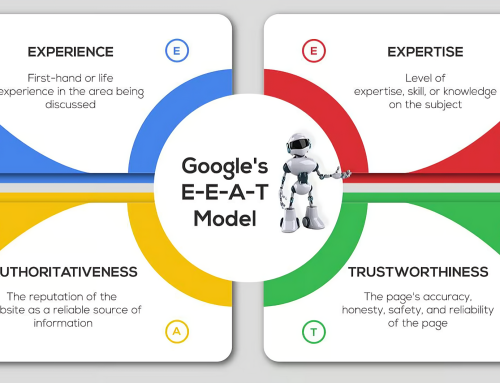If you’ve been in the digital marketing game for a while, then it probably seems like just when you start to find your footing with search engine optimization (SEO), the rug gets pulled, and you have to change course.
Well, we’ve got some good news and some bad news about that.
First, the bad news: SEO trends in 2024 and beyond cover some of the biggest shifts to date. That means that even if you have a page that’s been performing well for years, it’s not guaranteed to stay that way.
The good news? You absolutely can adapt to these SEO changes – you just have to know what the playing field looks like and plan accordingly, whether that means overhauling your SEO strategy or investing in professional SEO services.
With all this in mind, let’s take a look at the biggest SEO trends emerging now and future SEO trends to look out for, plus what you can do to make them work for you.
What Are the Latest Trends in SEO?
From your content to your search engine strategy, here are the 2024 SEO trends you should definitely be paying attention to.
1. The New “E” in E-A-T
When it comes to acing your Google search presence, there are two main factors you’ve had to consider: Google’s search algorithm and Google Search Quality Rater Guidelines.
In terms of the latter, E-A-T (Expertise, Authoritativeness, Trustworthiness) has been the name of the game for proving to Google that your content is accurate, reliable, and worthy of a high ranking. But enter the new “E,” Experience, which has turned E-A-T into E-E-A-T and upped the ante for ensuring your content delivers on value and credibility.
E-E-A-T is the new gold standard for creating high-quality content – at least as far as Google search is concerned. And as such, you’ll need to account for these enhanced expectations if you want to show up (and continue showing up) in those coveted top spots.
How to Adapt:
- Have your content written by real humans
- Highlight real-world experiences
- Make sure the information you share is accurate and verifiable
- Follow good technical SEO practices
- Optimize the user experience on your site
2. SEO Goes (Even More) Local
More than half of organic visits to search engines are done via mobile devices, and many of these visits are geared toward local search. You can see evidence of this in the huge influx of searches that include “near me” in the query (Google cites more than 1.5 billion per month) as well as Google’s recent push for a user’s precise location.
As far as SEO trends go, local SEO is one you’ve probably been tracking for some time. However, looking forward, establishing strong local SEO is going to be even more crucial for businesses with offline locations, and it’s going to take quite a bit more than a basic web presence to make it happen.
How to adapt:
- Optimize your Google My Business listing
- Encourage and incentivize positive reviews
- Obtain citations and mentions in relevant local publications
- Distribute business data via local data aggregators
- Add location-specific pages to your site
3. Zero-Click Search Experiences
Zero-click searches are one of the latest trends in SEO – and one of the most disruptive.
As of 2022, a quarter of desktop searches and 57% of mobile searches resulted in someone leaving the results page without clicking on any links. And with Google pushing short, quippy, often AI-generated query answers now more than ever, this number has almost certainly shot up.
These zero-click searches aren’t necessarily harmful to overall brand awareness, even if your website traffic is likely to take a hit. For digital marketing purposes, though, they do necessitate a change of focus away from on-site engagement and toward that coveted featured snippet.
How to adapt:
- Answer questions as part of your content strategy, making sure to put the question itself in a header
- Add mini FAQ sections where relevant
- Create “How To” guides
- Avoid first-person language
- Keep your content and website back-end updated to boost domain authority
4. Rise of the Core Web Vitals
Some of the most impactful SEO changes in 2024 are direct results of changes within the Google search algorithm. Case in point: Google’s Core Web Vitals, which are now an official ranking factor that you have to accommodate with your site.
Core Web Vitals speak to the experience users get on your website, and include things like page loading speeds, how smoothly pages load, and user interactivity. And in making them official ranking factors, Google has made it so that your webmaster has just as big a role to play in your digital marketing efforts as your content editor.
How to adapt:
- Use a tool like Google PageSpeed Insights to figure out what your current performance looks like
- Add a caching tool to your site
- Store your content in a cloud-based Content Delivery Network (CDN)
- Get rid of any unused third-party imports
- Use JPGs and videos instead of PNGs and GIFs
5. All Eyes on Visual Search
The past year has brought huge advancements in the ability of search users to query by image, instead of by text. This is thanks to things like improved image recognition technology, which has seriously refined the way that search engines store, view, and process visual information.
Visual search is the process of using images (for example, photos or screenshots) to seek out information. From there, AI-driven image recognition tools take that image and “read it” to determine what’s there and what the context is. Search functions on Google, Bing, Amazon, and other sites then use this information to pull up similar images that the search user may be interested in.
This type of querying is especially prevalent in shopping-related searches, and ecommerce brands that optimize for visual search tend to see higher conversion rates and revenue.
How to adapt:
- Include keyword-optimized text with the images on your site
- Follow standard SEO rules for optimizing images, including using alt text and descriptive filenames
- Start by testing out a visual search tool like Google Lens on a small portion of your product catalog and see how it performs
6. Content Refresh and Revitalization
If current SEO trends tell us anything, it’s that the quality of your content is holding a lot more weight than the quantity. Today and for the foreseeable future, it’s simply not enough to set it and forget it with the content on your site. To truly succeed in digital marketing, you need to engage in regular content updates, keeping things fresh, timely, and optimized for an ever-evolving search landscape.
There are, of course, many ways to go about doing this. As part of our link building services, for example, we help brands breathe new life into old content by updating outdated citations, removing broken URLs, and building out a more robust network of high-value internal and external links.
And it doesn’t stop there. From blog posts to web copy, now is the time to bring everything up to date with SEO, user intent, and your own growth as a brand. It’s a lot of work, but Google search – and your audience – put a high price on content relevance, so it’s worth the effort.
How to adapt:
- Improve readability and text layout by adding headers and breaking up big paragraphs into smaller, more digestible sections
- Rework old content to target relevant topics, instead of just relevant keywords
- Update title tags and meta descriptions
- Perform keyword research to figure out what you should be trying to rank for now, then modify old content to fit that new strategy
- Swap outdated images for new ones, and make sure to attach keyword-rich alt text to each image you post
SEO Brand Can Keep You on Top of Current and Future SEO Trends
At SEO Brand, we stay on top of SEO trends so that you don’t have to. If you’re worried about falling behind, or if you simply don’t have the time or budget to implement an in-house SEO strategy, learn about our SEO consulting services and get a trusted partner in adapting to whatever new SEO best practices the search engines throw your way.

